Introduction
In the rapidly evolving landscape of technology, cloud services have emerged as indispensable tools for businesses striving for agility, scalability, and efficiency. Among the leading providers, Amazon Web Services (AWS) and Microsoft Azure stand out, each offering a unique set of features and capabilities tailored to diverse organizational needs. AWS, with its extensive range of services initiated in 2006, has become synonymous with flexibility and innovation, enabling companies to manage their operations seamlessly.
Conversely, Azure, launched in 2010, has quickly gained traction, particularly among enterprises already entrenched in the Microsoft ecosystem, thanks to its seamless integration with existing tools.
As organizations increasingly turn to cloud solutions, comprehending the distinctions between these two giants becomes essential. This article delves into a comprehensive comparison of AWS and Azure, examining their service offerings, pricing models, security features, and the critical considerations for businesses when selecting a cloud provider. Insights into real-world applications and industry trends will illuminate how each platform can serve as a catalyst for innovation, ultimately guiding organizations in making informed decisions that align with their strategic ambitions.
Overview of Cloud Services
Amazon Web Services (AWS) and Microsoft’s platform are at the forefront of cloud service solutions, driving innovation across numerous industries. AWS, established in 2006, boasts a comprehensive range of services designed to address diverse business requirements, encompassing everything from computing capabilities to extensive data storage options. Its robust architecture allows organizations like Dunelm Group plc, a leading UK homewares retailer, to scale effectively, reflecting their growth through modernized structures and software frameworks. With over 400 million website sessions annually, Dunelm capitalizes on AWS's capabilities to optimize performance and revenue generation.
'Launched in 2010, Microsoft's cloud platform has rapidly gained popularity, especially among businesses that are already integrated into Microsoft ecosystems.'. The distinct selling point of the platform is its smooth connection with current Microsoft tools and services, enabling businesses to utilize their existing investments while moving to online solutions. For instance, professionals like Amor Steinberg at BMW Group utilize Azure to enhance analytics and machine learning capabilities, enabling data-driven decision-making that adheres to stringent regulatory standards.
Both platforms provide extensive online services; however, their architectural frameworks and service offerings are distinct. AWS utilizes a microservices architecture that enables entities to create and launch applications with agility and flexibility. In contrast, this platform's approach is often more focused on hybrid solutions, allowing enterprises to retain some control over their on-site systems while gaining advantages from scalability.
Recent developments indicate a competitive landscape, with AWS reducing operational costs significantly—by over 45 cents per unit in the U.S. alone—through strategic network optimization. Such cost efficiencies not only enhance profitability but also allow for ongoing investments in technology and service expansion. As the use of online services grows, the decision between AWS and another major provider will more and more depend on an organization’s particular requirements, technological course, and current infrastructure.
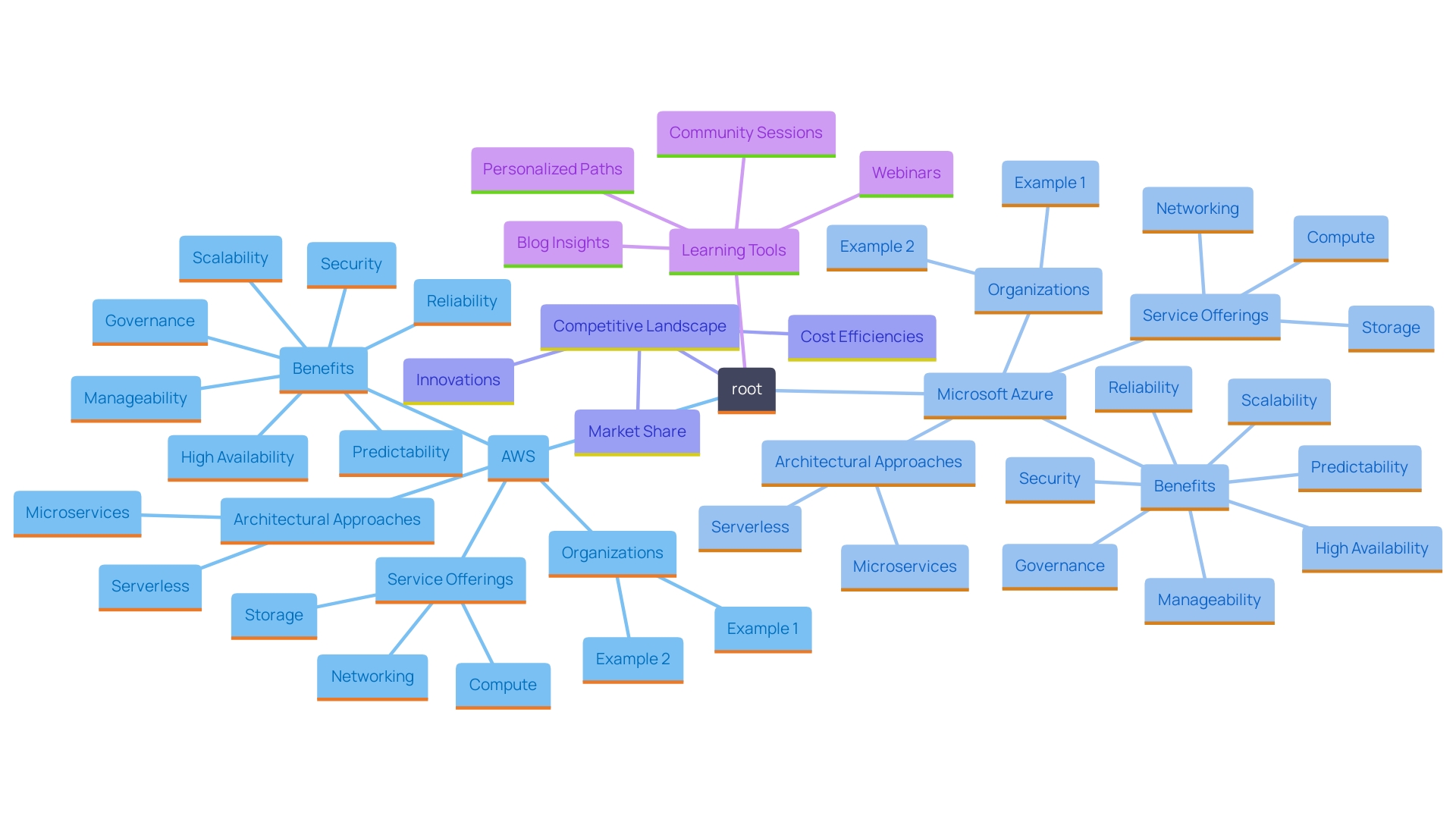
Compute Services Comparison
AWS's Elastic Compute Cloud (EC2) stands as a cornerstone in the realm of cloud computing, offering a robust platform for scalable computing capacity. Users can launch virtual servers with an array of configurations tailored to specific workloads, facilitating flexibility and efficiency in resource allocation. Relatively, Microsoft's Virtual Machines serves as its counterpart, also offering scalable computing resources tailored to accommodate various enterprise requirements.
'While both AWS and another cloud provider offer on-demand resource allocation, AWS's extensive variety of instance types often gives it an edge for organizations requiring a wide range of computational capabilities.'. This flexibility is particularly advantageous for businesses navigating the complexities of hypergrowth, where the temptation to scale rapidly can lead to overprovisioning and unnecessary costs. In contrast, the cloud service's deeper integration with Windows-based applications makes it a compelling choice for enterprises already embedded in the Microsoft ecosystem, streamlining operations and enhancing productivity.
Moreover, AWS continually enhances its offerings, recently introducing advanced capabilities within the AWS Supply Chain to aid in forecasting and inventory management, thereby reducing operational costs and improving responsiveness to market demands. Such innovations reflect the ongoing evolution of online services to address the unique challenges faced by businesses today. As the cloud environment becomes more competitive, grasping the subtle distinctions between AWS and other similar services is crucial for businesses looking to enhance their infrastructure and foster innovation.
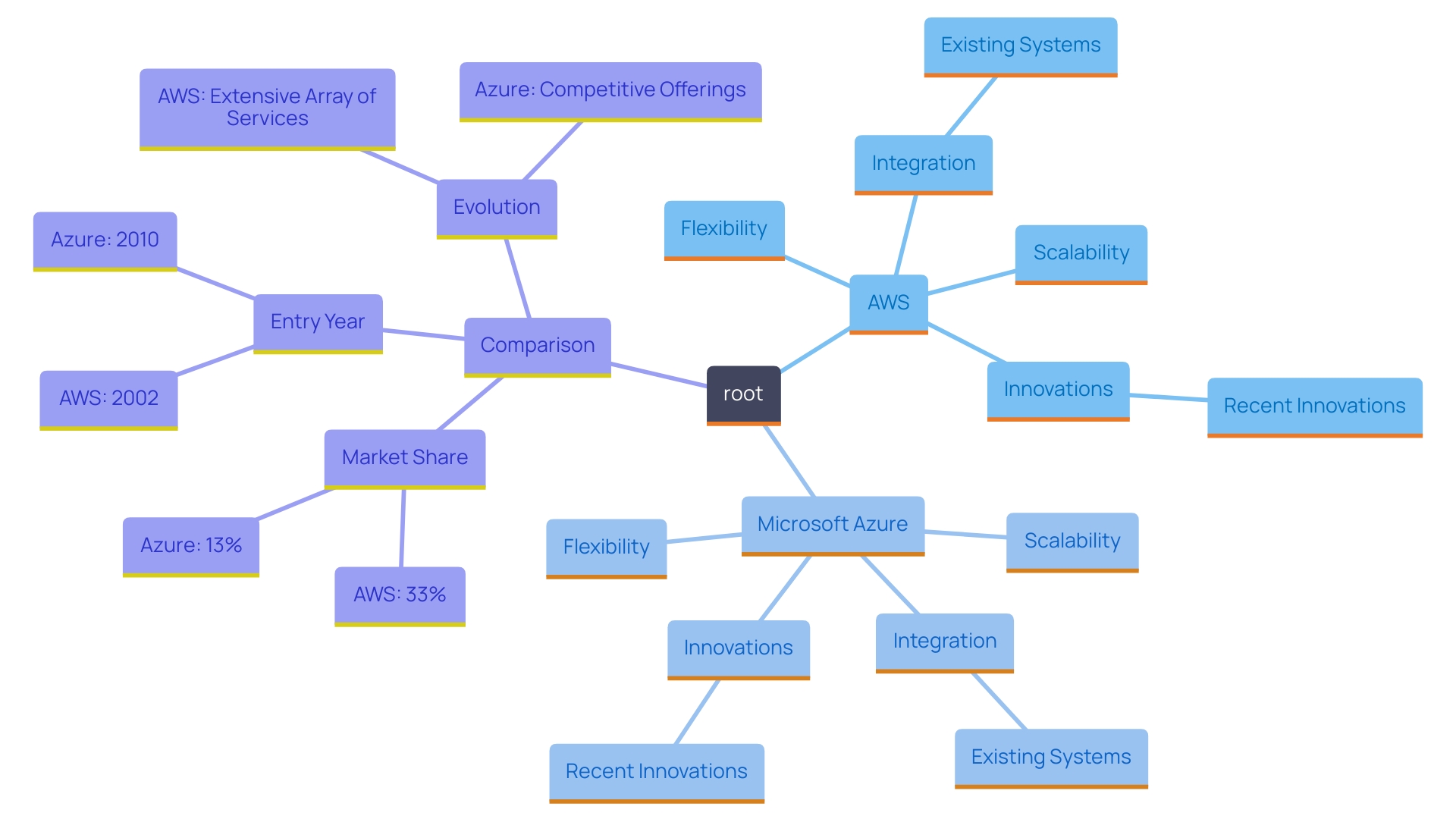
Pricing Models and Cost Considerations
"AWS and another cloud service both utilize a pay-as-you-go pricing model, designed to offer flexibility and scalability for users.". However, the intricacies of their pricing structures can be challenging to navigate. AWS primarily charges based on resource consumption, offering multiple pricing options such as Reserved Instances, which cater to long-term commitments. This flexibility enables entities to adjust their spending in accordance with changing workload demands.
On the other hand, Azure enhances its pricing approach by offering extra discounts for enterprises that hold existing Microsoft licenses, making it especially appealing for entities already integrated within the Microsoft ecosystem. Both platforms offer cost calculators to aid businesses in estimating their expenses, yet AWS generally provides a more extensive range of pricing options. This can be especially advantageous for entities facing fluctuating workloads, as it enables more accurate cost control.
Understanding the distinction between price and cost is crucial. Price represents the rate charged for a product or service, applied to a Stock Keeping Unit (SKU). It's essential to differentiate this from cost, which is determined by the equation: Consumption x Price. There are two predominant types of pricing applied to a SKU: list price and contracted/custom price. The list price acts as the standard rate, which may incorporate basic discounts, while the contracted price is customized specifically for the entity, reflecting any negotiated discounts and credits.
As companies grow, handling these expenses efficiently becomes essential. A recent study emphasized that 25% of UK entities have moved half or more of their online workloads back to local infrastructures, citing security issues and high project expectations as primary motivators. This trend underscores the importance of thoroughly evaluating the financial implications of cloud services versus traditional infrastructures. In summary, while both AWS and another cloud provider offer attractive pricing structures, the decision between them should be guided by a company's specific requirements, current resources, and future expansion strategies.
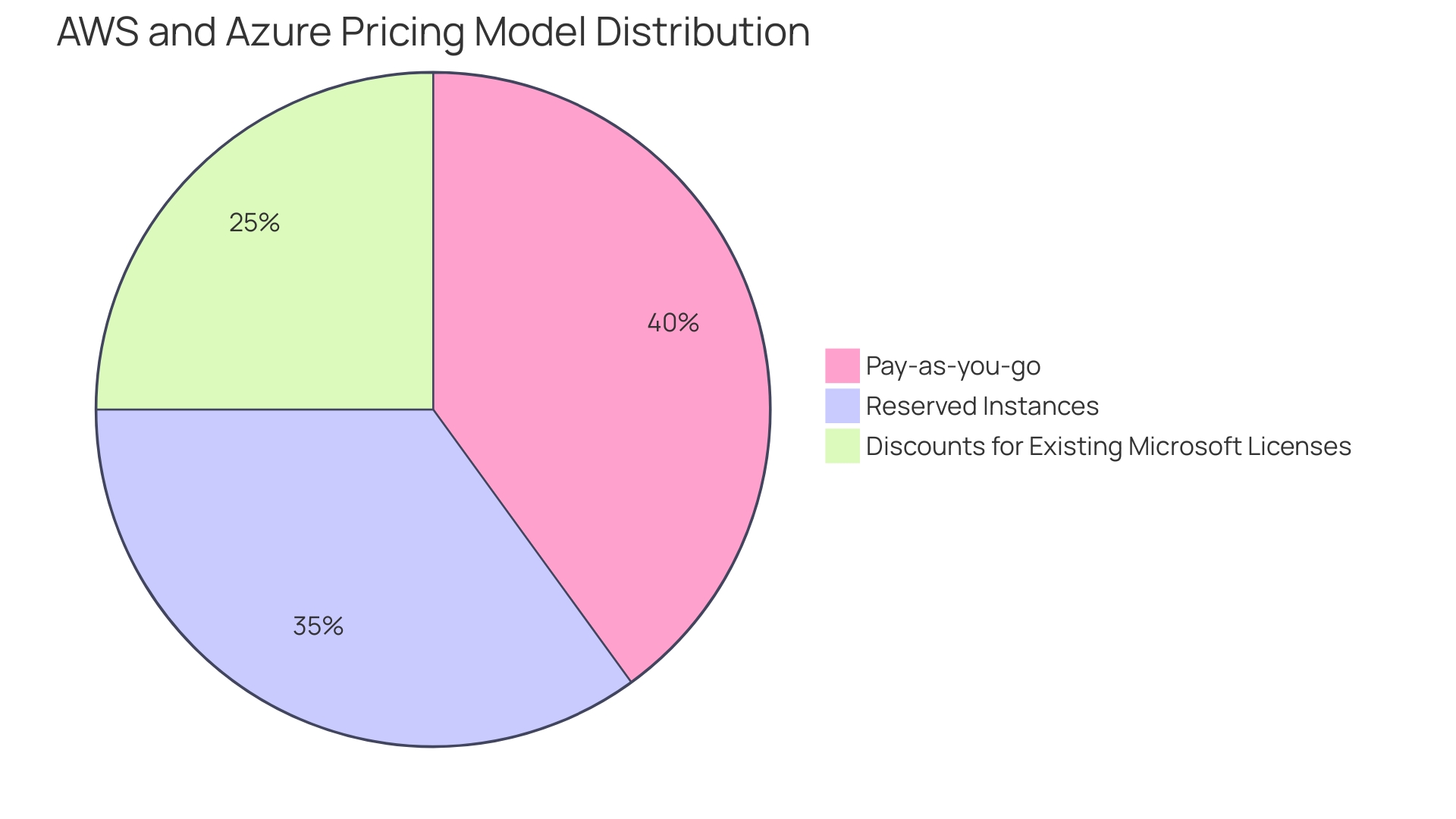
Security and Compliance Features
Security remains a critical focus for both AWS and its competitor, with each platform adopting robust frameworks to protect customer data and maintain compliance with regulatory standards. AWS operates under a shared responsibility model, delineating roles between the service provider and the customer. This model empowers organizations to leverage AWS's security features, such as Identity and Access Management (IAM), advanced encryption protocols, and a comprehensive suite of compliance certifications that span multiple industry standards, enhancing their overall security posture.
Likewise, the platform prioritizes security through a suite of tools designed to safeguard enterprise environments. Significant offerings include the Security Center, which provides unified security management and advanced threat protection across hybrid cloud environments, and Active Directory, which enhances identity management and access control. Both AWS and the other major cloud provider adhere to major regulations, ensuring that their services meet stringent compliance requirements.
A significant advantage of this platform lies in its seamless integration with existing Microsoft security tools, which can streamline security management processes for organizations already utilizing Microsoft products. This integration fosters a more cohesive security ecosystem, allowing businesses to leverage familiar tools while enhancing their security capabilities.
Moreover, recent insights from the Microsoft Digital Defense Report indicate that as threats evolve, so too must the strategies to counteract them. The report emphasizes the necessity of utilizing AI in cybersecurity, highlighting that such innovations require vast amounts of data to effectively predict and respond to potential attacks. This aligns with industry trends underscoring how advanced security measures can not only fortify defenses but also drive cost efficiencies by preventing unauthorized access and resource hijacking.
In the words of cybersecurity specialists, the environment has changed considerably, with online security becoming an essential element of overall IT strategy. "Cybersecurity as we know it is a result of an evolution that unfolded over the past several decades," reflecting the importance of adaptive strategies in addressing increasingly sophisticated threats. Entities utilizing AWS and similar platforms can consequently not only improve their security structures but can also place themselves strategically in the competitive digital environment.
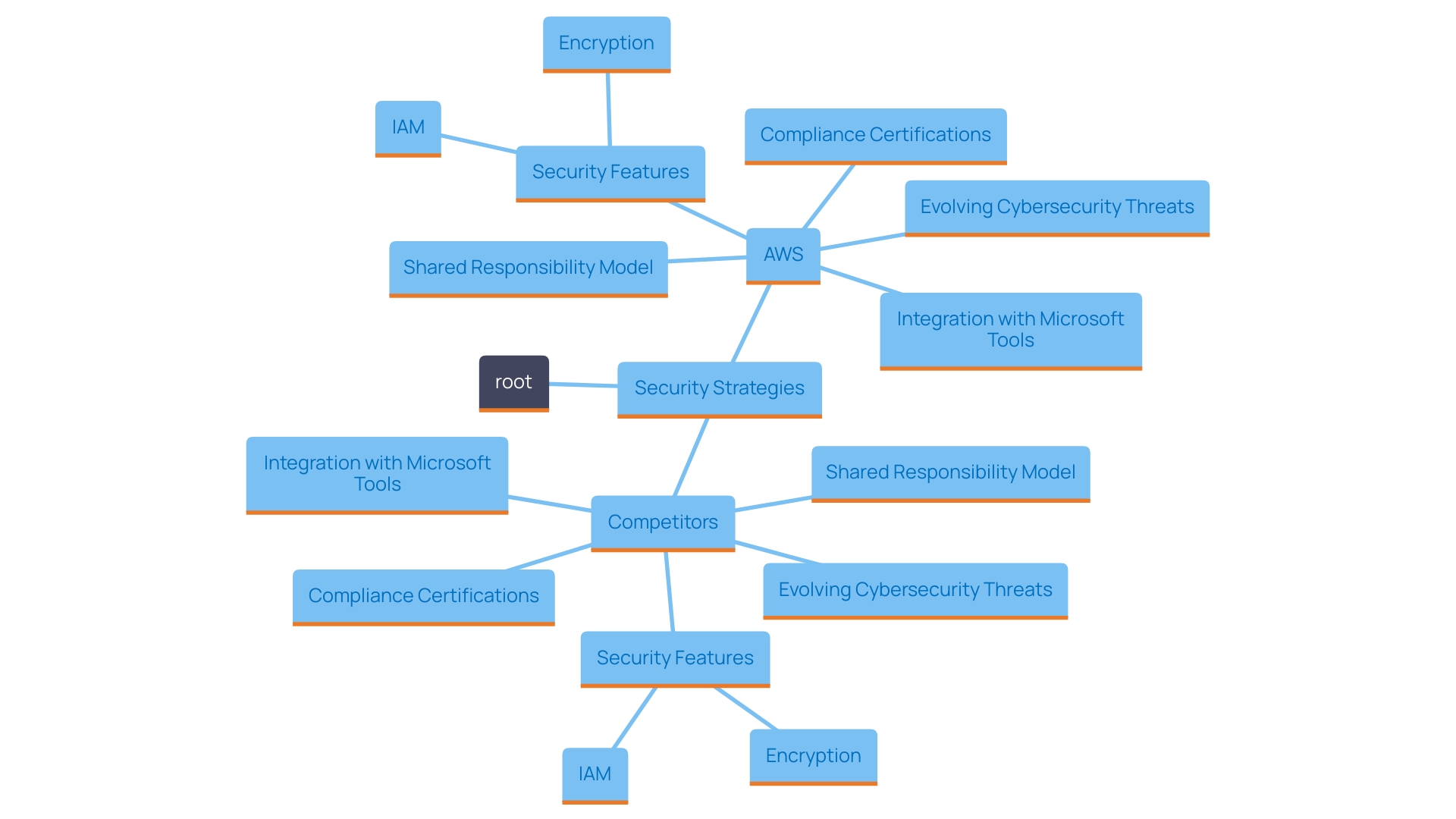
Choosing the Right Cloud Provider
Choosing between AWS and another cloud provider requires a detailed comprehension of a company's unique needs and strategic goals. For businesses that prioritize scalability and flexibility, AWS often emerges as a compelling choice, bolstered by its extensive range of services that cater to diverse technical demands. According to Synergy Research Group, AWS continues to lead the cloud market, demonstrating resilience even amidst economic fluctuations, which can be attributed to its innovative offerings, particularly in areas like generative AI.
On the other hand, organizations that are deeply integrated into the Microsoft ecosystem might find that cloud service more advantageous. The platform's seamless compatibility with existing Windows applications and services positions it as an ideal solution for companies seeking straightforward integration. As observed by industry specialists, the online infrastructure is swiftly changing, and the platform has increased its market presence, underscoring its expanding impact.
For example, James Kelty, Head of Infrastructure at Chess.com, emphasizes the importance of a stable IT infrastructure that connects various solutions, indicating that the platform's capabilities can effectively meet such needs. The capability to utilize both public computing services and on-site solutions can be especially advantageous for companies aiming to preserve operational adaptability.
Ultimately, the decision between AWS and Azure should align with an organization’s technical requirements, budgetary constraints, and long-term strategic goals. As companies assess their options, it is critical to consider not only current needs but also the anticipated growth and technological advancements that may impact their cloud strategy in the future.
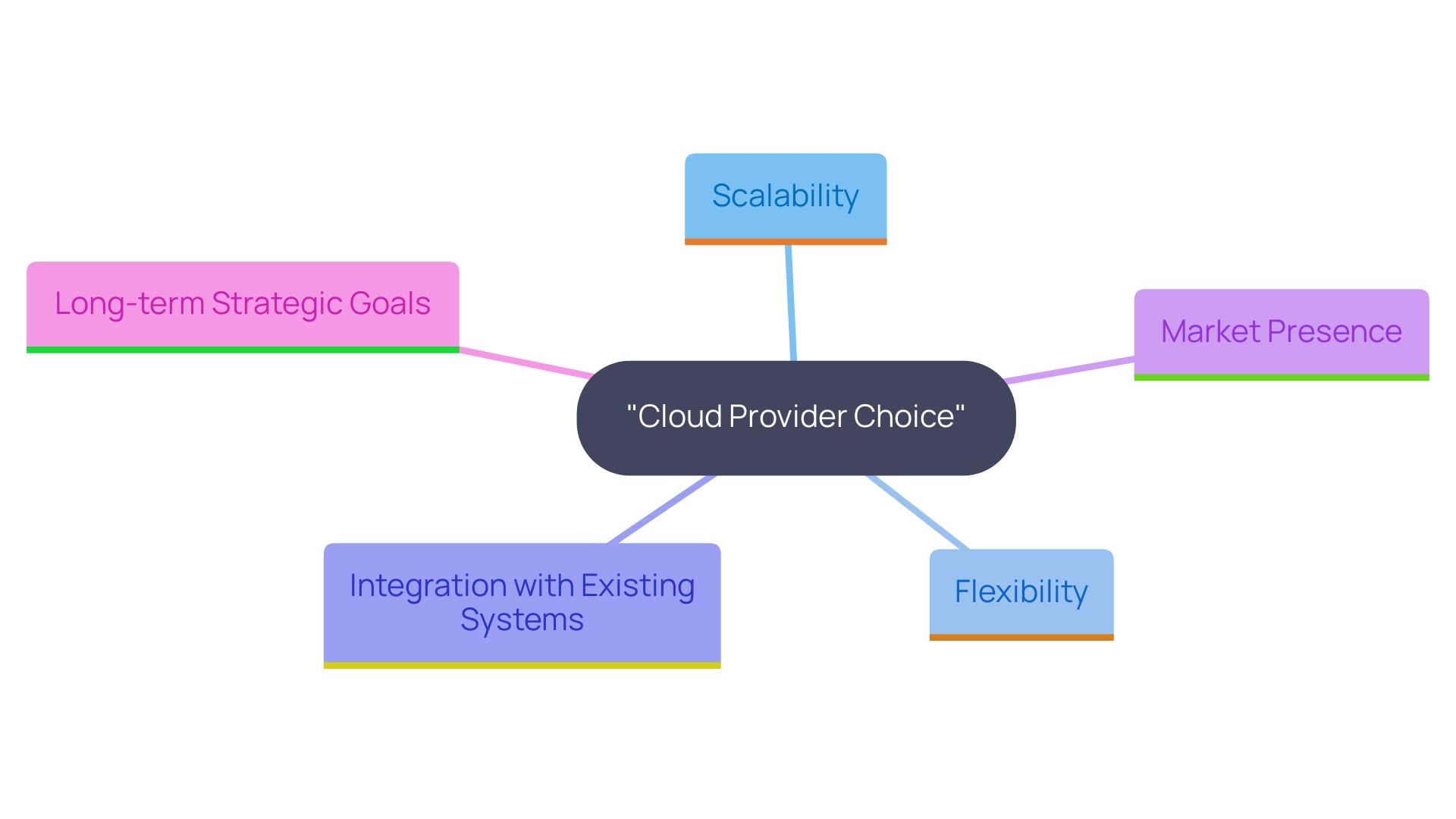
Conclusion
The comparison of Amazon Web Services (AWS) and Microsoft Azure underscores their unique strengths in the cloud services landscape. AWS excels with its extensive service offerings and flexible architecture, making it suitable for organizations focused on innovation and scalability. Conversely, Azure's seamless integration with Microsoft tools positions it as an optimal choice for enterprises already within that ecosystem, facilitating easier transitions to cloud solutions.
Cost is a significant factor in choosing between the two. Both AWS and Azure utilize pay-as-you-go pricing models, but AWS offers a wider array of options, which can be advantageous for businesses with variable workloads. Azure’s additional discounts for existing Microsoft license holders further enhance its appeal for those already invested in Microsoft products.
Security and compliance are critical considerations as well. Both platforms have established robust frameworks to protect customer data and meet regulatory requirements. AWS employs a shared responsibility model, while Azure leverages its integration with Microsoft security tools to strengthen its security capabilities.
In summary, the choice between AWS and Azure should be guided by an organization’s specific needs, infrastructure, and long-term goals. As the technological landscape continues to evolve, assessing the strengths of each platform will be essential for driving innovation and achieving sustainable growth in a cloud-centric environment.




